December 19, 2017
Product Trends for 2018
From the latest in tech to exciting new color choices to the resurgence of some old favorites, there’s a lot to like in 2018.
Over the years, Bryan Clayton has given away countless T-shirts, stickers and other products emblazoned with the name of his company, GreenPal.
As the “Uber for the lawn care industry,” the Nashville, TN-based company needs to get in front of both homeowners and lawn care professionals. That’s why, Clayton says, it’s important to find products that leave a mark.
“We usually hand out T-shirts, stickers,” Clayton says, “and we were looking for ways to try to experiment and get a gift we knew would add value and be useful, rather than just be hopeful they like whatever we handed out.”
GreenPal found what it was looking for with Ankr Bluetooth keychains, which now hang from the lawn mowers and trimmers of its partner professionals. “We’ve gotten some good feedback from the people we’ve given it to,” says Clayton.
Promotional products buyers like Clayton want to do everything they can to stay top of mind with their own clients. And the way to do that is by tapping into the hottest product trends – the things that end-users innately respond to.
“Promo product trends don’t exist in a silo away from everything else that’s happening in the world,” says Daniel Levine, a trends expert with the Avant-Guide Institute, a New York-based consultancy for global trends. “They’re definitely following everything else that’s happening culturally. They need to be relevant. In many ways, promotional products have to lead cultural relevancy. They’ve got to be cool.”
From smart clothing that can connect you with your favorite basketball teams to iridescent drinkware meant to woo millennial consumers, here are some of the trends driving new products in 2018.
Appealing to New Buyers
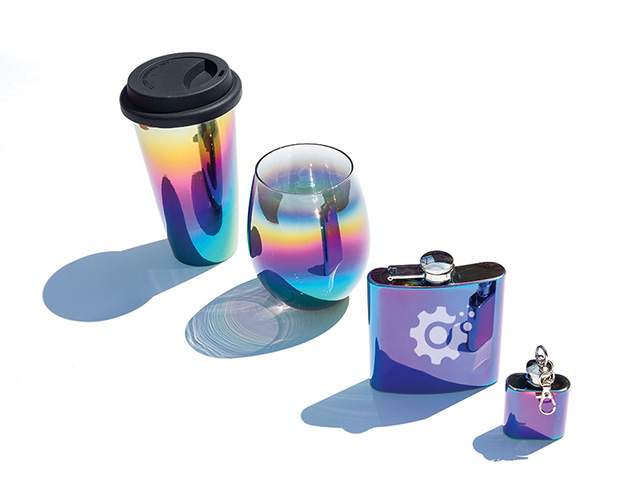 PRODUCT PICK: Manufactured by DCI Gift; dcigift.com, this iridescent drinkware line is playful and intriguing.
PRODUCT PICK: Manufactured by DCI Gift; dcigift.com, this iridescent drinkware line is playful and intriguing.
Millennial consumers are driving change everywhere, including in the promotional products industry. For Michael Hung, general manager of products manufacturer Headwind Group, that means bright colors, metallics and lots of patterns – what he calls “fun, playful, quirky stuff.”
“Fanciful, hyper pigmentation,” adds Hung. “Saturated colors and photo realism. You’ll see things like really cool tropical prints on hats and bags. The market’s definitely moving more toward a younger, hipper, cooler consumer. It’s cliché, but it’s the millennial.”
While the promotional products industry isn’t known for moving quickly to follow trends, Hung said more suppliers have started to move in that direction, chasing the all-important millennial consumer.
“A lot of our stuff is more about the saturated colors,” Hung says. “We’re doing a lot more prints, and I’m seeing a lot of promotional products suppliers beginning to venture into more daring colors than they have traditionally. In the old days it was navy, red and neutral colors. Now they’re beginning to add and expand their color range, particularly in drinkware.”
Standards Reinvented
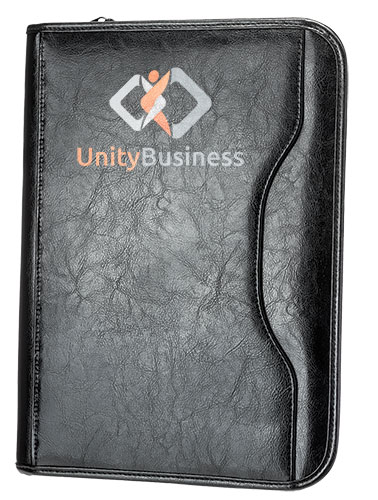
PRODUCT PICK: This vintage leather padfolio (P2700) is an example of a classic product that’s making a comeback. Available from Gemline (asi/56070); gemline.com.
Toward the end of this year, Chicago-based distributor Quality Logo Products (asi/302967) began to see a resurgence of more traditional cut-and-sew product categories.
“Backpacks, duffels and folios tapered off a couple years ago,” says Bret Bonnet, co-owner and founder of Quality Logo Products. “Now those product lines finally got refreshed. We’re seeing some growth there.”
While tech products continue to be popular, Bonnet said some companies desire an “alternative to tech,” and the new styles are appealing. “They were so stale,” he says of past designs. “They were the look and feel of what my parents would have wanted if they hit the five-year mark at their employers.”
Backpacks in particular have seen a rapid adoption in the workplace. Working men who once opted for briefcases, (or more recently, messenger bags) are now choosing backpacks for their comfort and convenience. Accordingly, the look of backpacks has shifted for a wider range of professional users, accommodating VPs and salespeople as they once did students and outdoor enthusiasts. “Men’s backpacks have gotten more executive,” Marshal Cohen, analyst for market research group NPD Group, told the Wall Street Journal, adding the look has “evolved from utilitarian and technical versions … to ones that are more upscale in leather, or a mix of fabrication.” And there’s been an uptick in sales as a result; NPD reports that sales of men’s backpacks increased 5% to $864 million in a 12-month period ending in August, representing 48% of the entire U.S. backpack market.
Going Wireless
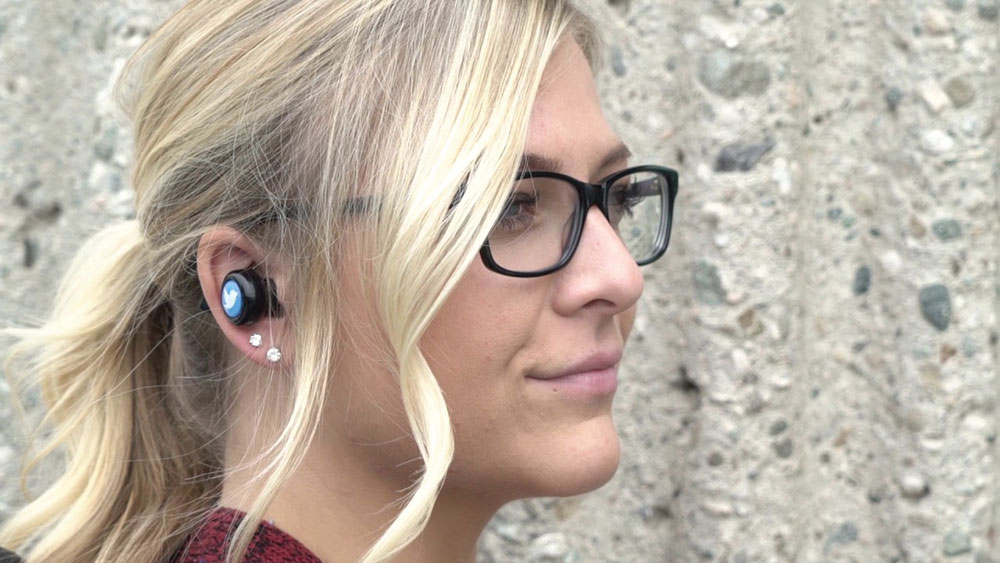 PRODUCT PICK: These Bluetooth-enabled wireless earbuds can be custom-branded with clients’ logos. Available from OrigiAudio (asi/75254); promotionalspeakers.com
PRODUCT PICK: These Bluetooth-enabled wireless earbuds can be custom-branded with clients’ logos. Available from OrigiAudio (asi/75254); promotionalspeakers.com
With smartphone makers like Apple and Motorola doing away with headphone jacks, Bluetooth-enabled products are becoming even more popular.
“That’s an area that continues to evolve,” says Mike Fossano, vice president of account services at Premier Communications Group, a Royal Oak, MI-based marketing firm. “We’re seeing a lot as far as the Bluetooth headphones. There are some pretty cool things happening there.”
Sound choices also continue to expand in an industry that’s offered affordable speaker options sprinkled in with a smattering of high-end incentive brands (think Bose). Headwind Group’s Hung predicts the higher end of the market will continue to expand as name-brand electronics companies enter the industry. “There are a few companies out there that are doing more innovative, higher-end speakers with higher-quality sounds,” he says.
Bonnet says Bluetooth capabilities don’t stop with headphones. Multifunction products like hats with speakers in them, or even fidget spinner speakers, also are emerging as big items. “Everyone’s trying to shove Bluetooth connectivity into every single product,” he says, “from a hat to connected socks.”
Wearable Technology Evolved
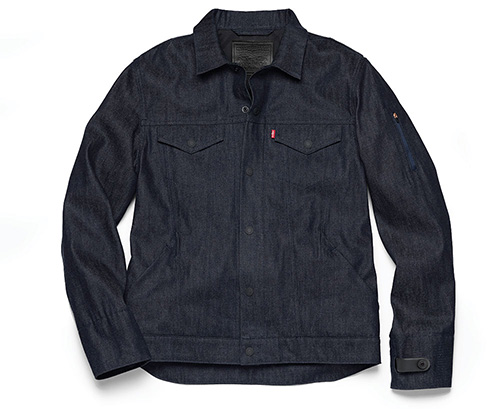
PRODUCT PICK: Levi’s partnered with Google to create a new commuter jacket that syncs a phone to the jacket to answer texts, follow GPS directions and more.
The smart clothing category is still finding its way, but new products hitting the market are sure to gain followers. “That’s a big trend,” says Levine, of Avant-Guide. “Smart everything, but smart clothing is something that’s taking off now.” The majority of today’s smart apparel features built-in sensors that measure vitals like health rate and record exercise data – in essence, replacing the spate of wearable technology accessories on the market.
But other types of smart clothing are beginning to pop up. Levi’s has begun selling its new Commuter Trucker jacket, which was created with Google’s “Jacquard” technology that infuses yarn and textiles with digital connectivity. The jacket allows urban cyclists to answer calls, keep tabs on GPS directions and even flip through music without checking their phone.
Nike, too, is selling NBA jerseys with a built-in NFC tag. Users can sync and scan the jersey to the NikeConnect app, which will allow fans to watch highlights of the player whose jersey they’re wearing.
Smart clothing and other wearable devices will have a range of applications, but one of the most intriguing is the benefit in the workplace. Fitness accessories such as watches and smart bands will increase communication and efficiency and reduce healthcare costs – benefits that will pay off for early adopters. Slightly further out, items such as smart glasses could give employees instant access to needed data. Eighty-one percent of chief information officers surveyed by Robert Half Technology in 2015 said they believe wearables will become common workplace tools by 2020. “I do believe this is the future of work, hands-down,” says Brian Ballard, co-founder and CEO of Virginia-based software developer Upskill. “The capability increase you get when you have an answer to everything you need at your fingertips is incredible.”
Selling Experiences
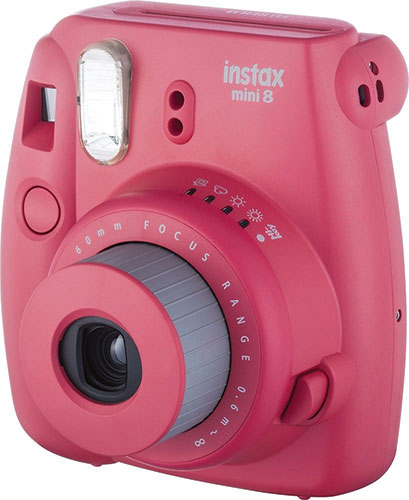
PRODUCT PICK: The FUJI Film Instax Mini 8 camera has the ability to print photos right on the spot. Available from Indigo (asi/62560); indigowatch.com
“One thing we’re seeing for 2018 is many more objects that are packaged as experiences,” Levine says. “We’re living in a world where everybody can have things. There are plenty of things around. But what’s unique, interesting and desirable is an experience. That’s a challenge for promotional products people, because how do you distribute an experience?” Products that require assembly, or are packaged in interesting ways, will be in demand to help create those experiences for customers.
One example that Levine cites can be found in retail: Instagate’s Tailgate-in-a-Box, which comes with a portable grill and everything tailgaters would need to throw a proper party.
Lisa Ghera, marketing associate for Boundless (asi/143717), singles out the FUJI Film Instax Mini 8 camera that comes with a built-in instant print feeder. “At a portable size,” Ghera wrote in a blog post on creating promotional product experiences, “the Instax Mini 8 is the ultimate camera to use to make sure experiences are captured as memories that live on forever.”
One way to build in experience is to tap into augmented reality products. In the industry, items like calendars, balls and even tattoos offer added interactivity and an experience that goes beyond the product. And it’s expected that by 2020, revenue from AR will be three times that of virtual reality. “We’ll see all kinds of products that can interact with augmented reality,” Levine says. “It can also be that at promotions, people will be given augmented reality apps that themselves work to add a layer of reality on top of everything they’re looking at. Exactly what form that will take, who knows? But I can easily imagine pointing a camera at various things and somehow a company’s logo is connected to whatever the camera’s pointing at.”
Three More Trends
Product Safety
Concerns about product safety have been growing, and Quality Logo Products co-owner Bret Bonnet expects them to take off even more in the new year. “It feels like it’s finally getting teeth,” he says. Clients have been asking more questions about the material their products are made of, Bonnet adds. They’re even asking about the Quality Certification Alliance by name. “It’s not the Disneys,” he says. “It’s not the multibillion-dollar corporations. It’s the dentists. It’s the children’s museum that’s asking those questions. In the beginning, the initiative for the QCA and product safety and compliance came from the bigger companies. It was for the niche buyer. Now smaller buyers are asking those questions. The education is getting there.”
Comfort
Suits have definitely gone by the wayside as the standard office uniform, and the emphasis is on put-together looks that can effortlessly transition from the office to job sites. “There’s a much more relaxed environment, especially in the clothing side,” says Michael Fossano of marketing agency Premier Communications Group. “A lot of the suits and ties are being pushed to the side in favor of more relaxed clothes and relaxed apparel.” High-quality custom-branded shirts from companies like Callaway and Lacoste will continue to see high demand, as will all-purpose outerwear like microfleece.
Hemp
In October, it was reported that Nebraska-based Bastcore inked the first ever contract to supply American-grown hemp fiber for apparel with a Los Angeles-based sustainable apparel company called Recreator. Hemp has a checkered history with apparel, but its biggest advocates have always pointed to it as a terrific untapped source for eco fabric, since the plant puts less strain on water and soil resources. “This partnership should encourage rural communities to re-invest in natural fibers and textile production,” Recreator CEO Matt McClain says. This unprecedented deal could spur greater usage of hemp in apparel – and perhaps offer a compelling new option in eco promotions.
Crissa Debree is a contributing writer for Advantages.
